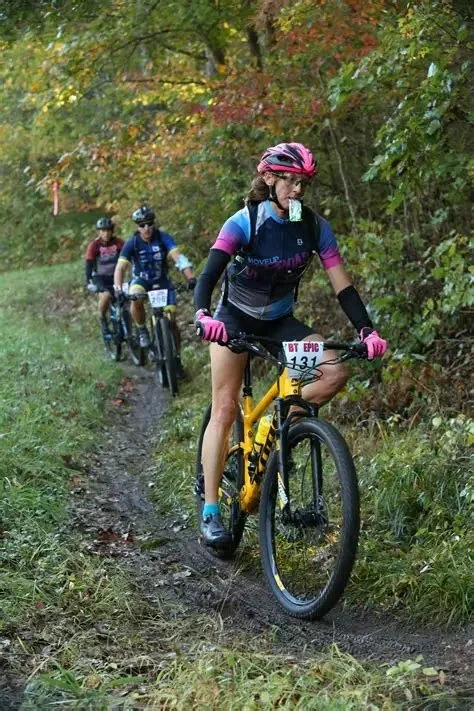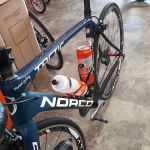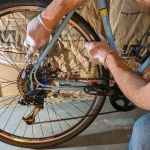
How to Prepare for Your First Mountain Bike Race
- 1. Understanding Mountain Bike Races
- 2. Essential Gear for Your First Race
- 3. Training for a Mountain Bike Race
- 4. Race Day Strategies
- 5. Mental Preparation for Race Day
- 6. Post-Race Recovery
Mountain biking races are a thrilling and challenging experience for cyclists, offering an exciting opportunity to test your endurance and skills. If you're preparing for your first mountain bike race, there’s a lot to consider, from the right gear to the best training techniques. In this guide, we’ll walk you through everything you need to know to prepare for your first mountain bike race, ensuring you’re ready to perform at your best on race day.
1. Understanding Mountain Bike Races
Mountain bike races come in a variety of formats, but they all have one thing in common: they challenge your stamina, technical skills, and mental toughness. The most common types of mountain bike races are cross-country (XC), downhill, and enduro. Each type has its unique set of challenges:
1.1 Cross-Country (XC) Racing
XC races are typically long-distance events that take place on a combination of natural terrain and purpose-built trails. Riders face challenges like steep climbs, technical descents, and rough, uneven surfaces. These races can range from 20 miles to over 50 miles, depending on the event.
1.2 Downhill Racing
Downhill races are shorter but much more intense, with riders descending steep mountain trails at high speeds. This type of race is all about mastering control and speed on technical terrain, with little emphasis on climbing.
1.3 Enduro Racing
Enduro races combine both climbing and descending, with timed sections where you race downhill and untimed sections where you climb. Riders need to balance endurance and speed, making this format particularly challenging for both body and mind.
2. Essential Gear for Your First Race
Having the right gear is crucial to success in mountain bike racing. Here’s a list of the essentials you’ll need to make sure you’re prepared:
2.1 Mountain Bike
The most important piece of equipment is, of course, your bike. Ensure your mountain bike is suitable for the terrain and type of race you’ll be participating in. For XC, a lightweight hardtail or full-suspension bike is ideal, while downhill races require a heavier bike with more suspension travel to handle rough, steep terrain.
2.2 Protective Gear
Safety should always come first. At a minimum, you’ll need a high-quality helmet that meets safety standards. For downhill and enduro racing, consider additional protection such as gloves, knee pads, elbow pads, and full-body armor to protect yourself in case of falls or crashes.
2.3 Hydration and Nutrition
For longer races, hydration and proper nutrition are key. A hydration pack is a great way to stay hydrated without needing to stop. Be sure to pack energy gels, bars, or other easy-to-consume foods that will keep your energy levels high throughout the race.
3. Training for a Mountain Bike Race
Training is crucial to preparing for a mountain bike race, and the more specific your training plan, the better prepared you’ll be. Here are a few key areas to focus on:
3.1 Building Endurance
Mountain biking races require a high level of endurance, especially for XC and enduro events. Focus on long rides that simulate race conditions, gradually increasing the distance and time you spend on your bike. Include some hill climbs and varied terrain to build the stamina required for challenging race courses.
3.2 Strength and Core Training
Mountain biking is physically demanding, especially when navigating rough trails. Incorporate strength training exercises such as squats, lunges, and deadlifts to build leg strength. Core exercises like planks and Russian twists will help you maintain stability on the bike and improve overall control during technical sections.
3.3 Technical Skills
Improving your bike handling skills is essential for mountain bike racing. Practice cornering, braking, descending, and navigating obstacles. Work on your skills on a variety of trails to become more comfortable with different technical aspects of riding.
4. Race Day Strategies
On the day of the race, it’s important to have a strategy in place to maximize your performance:
4.1 Pacing Yourself
One of the most important strategies during a race is pacing. Don’t start out too fast, especially in the early stages of the race. Conserve energy during the climbs and focus on maintaining a steady pace throughout the race, saving energy for the final stretch.
4.2 Positioning
During the race, always keep an eye on your position relative to other riders. If you’re in a competitive race, positioning can make a big difference, especially on narrow trails or during technical sections. Be strategic with your overtakes, and always stay aware of your surroundings.
4.3 Staying Calm Under Pressure
Mountain bike races can get intense, especially in the more technical sections of the course. Stay calm and focused, even when you encounter challenging terrain. Keep your mind sharp and remember the skills you’ve practiced during your training.
5. Mental Preparation for Race Day
In addition to physical training, mental preparation is crucial for mountain bike racing. Visualizing the race, managing pre-race nerves, and staying focused during the event are all key components of mental readiness.
5.1 Visualization
Before race day, take time to visualize yourself riding the course. Imagine navigating obstacles, maintaining a steady pace, and crossing the finish line. Visualization can help build confidence and calm your nerves.
5.2 Managing Race Day Nerves
It’s natural to feel nervous before a race, but managing those nerves is crucial for performance. Practice deep breathing, positive self-talk, and staying in the moment during the race. The more you practice managing stress, the better prepared you’ll be when it matters most.
5.3 Staying Focused
During the race, it’s easy to get distracted by other competitors or challenging terrain. Focus on your own performance, stay in the zone, and make adjustments as needed. The more focused you are, the better you’ll be able to react to any challenges that arise on race day.
6. Post-Race Recovery
Once the race is over, recovery is just as important as the preparation leading up to it. Proper recovery helps reduce soreness, speed up muscle repair, and keep you ready for your next race:
6.1 Stretching and Foam Rolling
After the race, take time to stretch and use a foam roller to release tight muscles. This helps prevent stiffness and promotes recovery by increasing blood flow to the muscles.
6.2 Hydration and Nutrition
Replenish fluids lost during the race with water or an electrolyte drink. Eating a balanced meal with protein and carbohydrates will help repair muscle tissue and restore energy levels.
For more tips on mountain biking gear, training, and race preparation, check out Cycling Guider for expert advice and recommendations.







 Soto Cycles LLC4.0 (66 reviews)
Soto Cycles LLC4.0 (66 reviews) Fly E-Bike National St2.0 (15 reviews)
Fly E-Bike National St2.0 (15 reviews) Pedego Electric Bikes Alexandria5.0 (260 reviews)
Pedego Electric Bikes Alexandria5.0 (260 reviews) Southbridge Bicycles4.0 (46 reviews)
Southbridge Bicycles4.0 (46 reviews) Trek Spring Hill4.0 (396 reviews)
Trek Spring Hill4.0 (396 reviews) Fenix Cycling5.0 (94 reviews)
Fenix Cycling5.0 (94 reviews) How to Teach Kids to Ride a Bike: A Step-by-Step Guide for Parents
How to Teach Kids to Ride a Bike: A Step-by-Step Guide for Parents Tips for Riding on Busy City Streets: Smart Strategies for Urban Cyclists
Tips for Riding on Busy City Streets: Smart Strategies for Urban Cyclists Best US National Parks for Mountain Biking: Ride Epic Trails Across America
Best US National Parks for Mountain Biking: Ride Epic Trails Across America Best Aero Helmets for Time Trials and Racing
Best Aero Helmets for Time Trials and Racing How to Clean and Lubricate Your Bike Chain Like a Pro
How to Clean and Lubricate Your Bike Chain Like a Pro 10 Must-Have Items for Long-Distance Cycling Trips
10 Must-Have Items for Long-Distance Cycling Trips